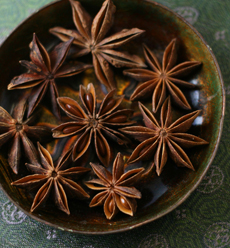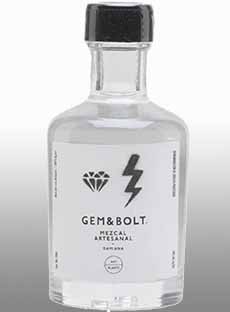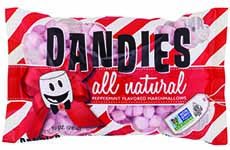|
In Italy, torrone (tuh-ROE-nay) is a traditional Christmas dessert, and the most popular candy in Italy.
In France, it’s known as nougat: a confection made from egg whites, honey, sugar and toasted almonds.
There are many regional variations; some are softer, some chewier. If you’re headed to any Italian city—or have friends who are—ask them to bring some back.
Especially well regarded are torrone from the Italian regions of Abruzzo and Sicily, and from the cities of Alba (in Piedmont), Cremona (in Lombardy) and Siena (in Tuscany) are especially renowned.
THE HISTORY OF TORRONE
Modern torrone may be derived from an ancient recipe or Roman or Arabic origin, possibly North Africa or Egypt. One source says that the first documented mentions of torrone come from the early Renaissance in Spain.
The record isn’t clear on either, but there is history that dates torrone the Renaissance.
The dessert was created in Cremona for the marriage of Francesco Sforza and Bianca Maria Visconti on October 25, 1441. Its shape, a long rectangle, was modeled after the city cathedral’s bell tower, the Torrazzo, after which it is thought to be named.
Following its introduction at the wedding, torrone was considered an elegant treat and was gifted at Christmas among affluent people.
Not surprisingly, torrone also became (and still is) a popular wedding favor.
Each year, the residents of Cremona celebrate the candy at La Festa del Torrone, an eight-day celebration in November that includes a reenactment of the legendary marriage.
Today, torrone is eaten after lunch and dinner from Christmas Day until January 6th, or Epiphany (although it is enjoyed year-round). If you don’t want to make it, buy it at a store that specializes in products from Italy.
Torrone is often served with an after-dinner amaro (bitters), a sambuca (a sweet anise-tasting digestivo), or a liquor, such as Strega [source].
TYPES OF TORRONE
Today, torrone is made throughout Italy. Each region has its own signature recipe.
There are two main types of torrone: hard and soft. The difference in the cooking time and the amount of egg whites used.
Both are made in large formats, sliced to order; in bars; or in individually wrapped pieces the size of hard candies. There are:
Traditional torrone, called friabile, is hard and crunchy.
Soft torrone, called morbido or tenero, is soft and chewy. It was introduced in the late 19th century by the grandson of Sorelle Nurzia, established by Ulisse Nurzia in 1835. Up until that point, torrone was only the traditional hard variety.
While both types of torrone are made of egg whites, nuts and sweeteners, recipes for both textures vary:
By nuts: hazelnuts, pistachios or walnuts are substituted for the almonds; some recipes use a blend of nuts.
By flavors: not just plain but amaretto, chocolate, chocolate covered, gianduia, lemon, orange, pistachio, praline, vanilla, even the latest flavors like salted caramel.
With inclusions: cacao nibs; chocolate chips; candied cherries, ginger, lemon peel, orange peel and mixed candied fruits; dried berries; lemon cream; limoncello.
If your appetite is whetted and you don’t want to make your own, head to TorroneCandy.com.
Torrone can be purchased in a variety of forms including bars, cubes, rounds, blocks, and bite-sized pieces and comes in two types of consistency:
RECIPE: HOMEMADE TORRONE
Although it’s very sticky and sometimes hard to handle, fresh, homemade torrone is delicious and enables you to create your signature recipe.
You can Americanize it by adding Heath Bar toffee bits, M&Ms, a peanut butter swirl, you name it.
This recipe from DeLallo uses a blend of almonds and hazelnuts, but you can use any blend or single nut you prefer. Just toast the nuts. Here’s how.
The recipe requires wafer paper, an edible paper that is flavorless (some have a vanilla flavouring) and dissolves in the mouth. It doesn’t affect the flavor of the food, but keeps sticky confections from sticking.
Here are more uses for wafer paper.
Ingredients For 10-12 Servings
1-1/2 cups honey
1-1/4 cups sugar
3 cup almonds, toasted
1-1/2 cups hazelnuts, toasted
3 egg whites*, room temperature
Pinch salt
Zest of 1 lemon
Zest of 1/2 orange
2-4 pieces wafer paper
Preparation
1. COMBINE the honey and sugar in a large glass bowl over a pot of water, making sure that the bottom of the bowl doesn’t touch the water. This is your double boiler. Cook over medium heat for 30 minutes, stirring constantly with a wooden spoon. When there are about 5 minutes left…
2. BEAT the egg whites and a small pinch of salt to stiff peaks using a stand mixer, hand mixer or whisk. Whisk the egg whites into the honey-sugar mixture, one whisk-full at a time, making sure to incorporate each whisk-full completely before adding more.
3. USE a wooden spoon and continue mixing for another 40-50 minutes, or until thickened: a ribbon of the mixture will stay on the back of the spoon for 5-7 seconds. Add the lemon and orange zests and the toasted nuts. Stir to combine.
4. LINE a baking pan with parchment paper, followed by a single layer of the wafer paper (trimmed as necessary). Add the torrone filling, smoothing the top out with a spatula. Then top with another piece or two of wafer paper.
5. PLACE a weight on top of the entire torrone, and set aside for 1-2 hours. If you don’t have pie weights, add a piece of parchment or foil to the top of the pan and fill with dried beans or loose change. You can also use a slightly smaller baking pan that will fit on top. Regardless of the method, protect the edible paper top with parchment.
6. REMOVE the weights and protective parchment or foil, turn the pan upside down on a board and cut the torrone into small rectangular pieces. Store it in an airtight container with wax paper between the layers.
________________
*Tip: When a recipe needs only egg whites, consider buying a carton of already-separated whites.
|
|
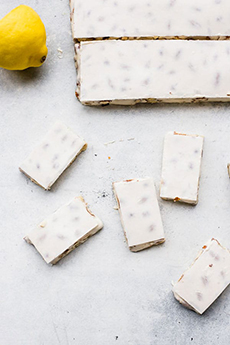
[1] Homemade torrone. The recipe is below. Cut the pan into longitudinal strips, then cut individual pieces to your preference (photos #1 to #3 © DeLallo).
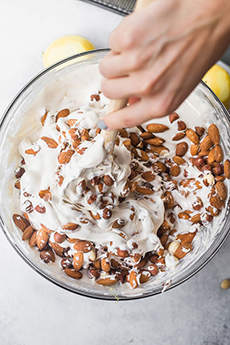
[2] Mixing the ingredients.
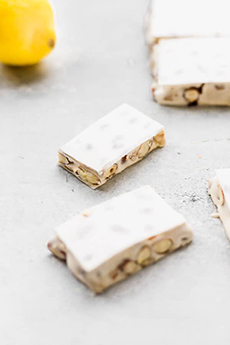
[3] There’s a delicious almond in every bite.
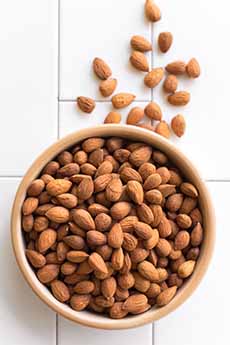
[4] Use the freshest almonds you can buy (photo © Good Eggs).
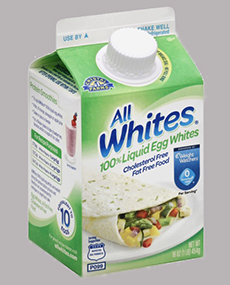
[4] Use the freshest almonds you can buy (photo © Good Eggs).
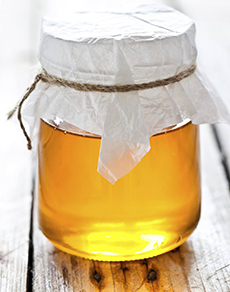
[5] Any mild honey will do (photo © National Honey Board).
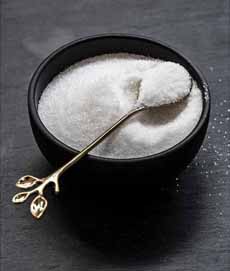
[6] Get out the sugar bowl (photo © Hannah Kaminsky | Bittersweet Blog). h gt
|
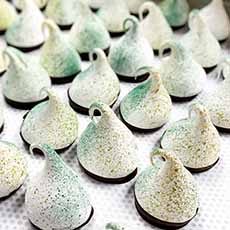
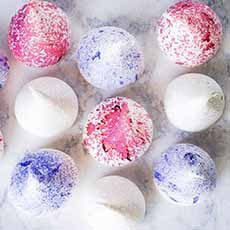
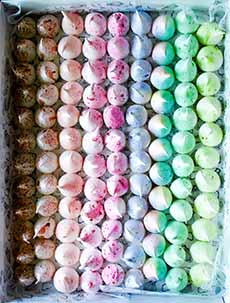
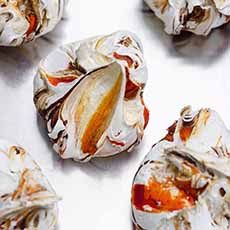
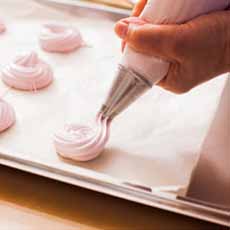







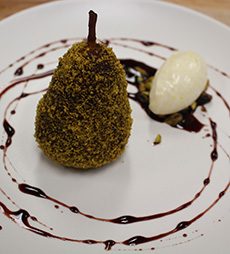
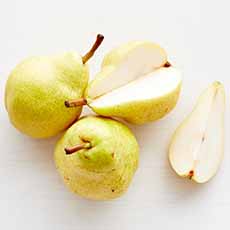

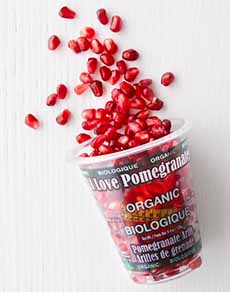

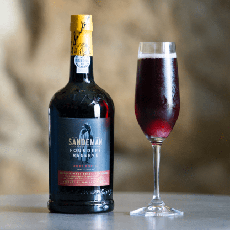
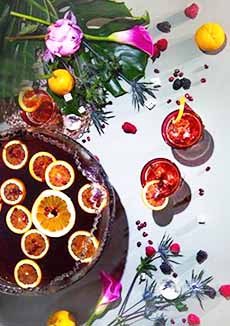 Pomegranate Mezcal Punch
Pomegranate Mezcal Punch